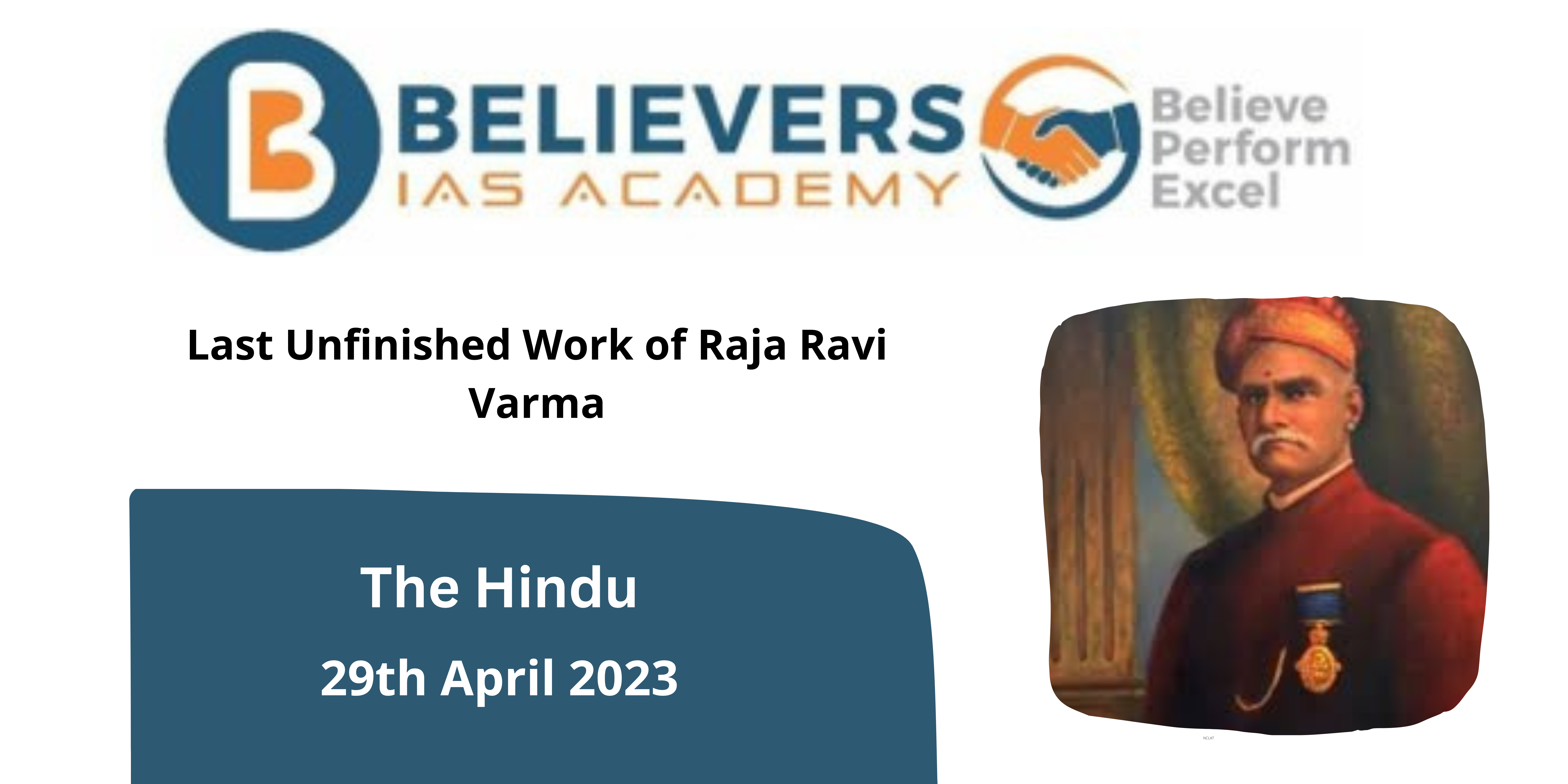Last Unfinished Work of Raja Ravi Varma
Context:
Raja Ravi Varma, who reinvented Indian art traditions throughout the colonial era, may soon have an unfinished painting in the public domain. The painting ‘Parsi Lady,‘ presently owned by the Kilimanoor Palace Trust, was the famed artist’s final (unfinished) work.
Points to Ponder:
- On the occasion of Raja Ravi Varma‘s 175th birth anniversary, the Kilimanoor Palace Trust has announced the unveiling of an unfinished painting by the great Indian artist who revolutionised Indian art traditions during colonial times.
- The picture, titled ‘Parsi Lady,’ is the artist’s final work and is owned by the Palace Trust.
- Raja Ravi Varma died on October 2, 1906, inside his Kilimanoor Palace

Lady Adorning Her Hair studio, ‘Chithrashala,’ leaving the work unfinished.
- The Palace Trust has decided to showcase the picture alongside another previously unseen painting, a depiction of Thriketta Thirunal Uma Amma Thampuratti.
- According to Rama Varma Thampuran, general secretary of the Kilimanoor Palace Trust, ‘Parsi Lady’ had a lot of specialities because it provided a glimpse into Ravi Varma’s Mumbai life and his association with celebrities like filmmaker Dada Saheb Phalke.
- The image is supposed to be a depiction of a Parsi woman Ravi Varma encountered in Mumbai.
- After his younger brother became ill, Ravi Varma travelled to Kerala in 1904 and completed and presented many of the paintings he brought from Mumbai, but ‘Parsi Lady’ remained unfinished.
- S. Madhan, an art restorer located in Tamil Nadu and a protégé of the late V.N. Selvarehai, senior conservator, at the National Research Laboratory for Conservation of Cultural Property, assisted the Palace Trust in restoring the piece.
- Overall, the imminent exhibition of an unfinished painting by Raja Ravi Varma is a momentous occasion for Indian art fans and historians.
His life
- Raja Ravi Varma was born at Kilimanoor, Kerala, in April 1848, into a Travancore royal dynasty. He demonstrated an early knack for art, beginning by sketching animals and daily scenes on walls with natural materials.
- Raja Raja Varma, his uncle, recognised his aptitude and nurtured him.
- Ayilyam Thirunal, the then-ruler of Travancore, patronised him, and he learned painting from the royal painter Ramaswamy Naidu.
- Varma became a popular aristocratic artist, and he was commissioned to paint several portraits in the late 1800s.
- He drew inspiration from Mahabharata and Ramayana stories for his Puranic paintings, which he created for the Durbar Hall of the new Lakshmi Vilas Palace in Baroda.
- He was supported by several other kings, including the Maharaja of Mysore and the Maharaja of Udaipur.
- His reputation soared, and he received a prize in 1873 for an exhibition of his paintings in Vienna.
- In addition, he received three gold medals at the World’s Columbian Exposition in Chicago in 1893.
- Varma completed over 7,000 paintings before his death at the age of 58.
- `Only one painting remains in ‘Chithrashala,’ the artist’s studio at Kilimanoor Palace — an unfinished portrait of a ‘Parsi lady,’ his final work.
‘Lady in the Moonlight,’ ” ‘Malabar Lady with Violin,’ ‘Lady with Swarbat,’ and ‘Maharashtrian Lady with Fruits‘ are among his most popular pieces.





